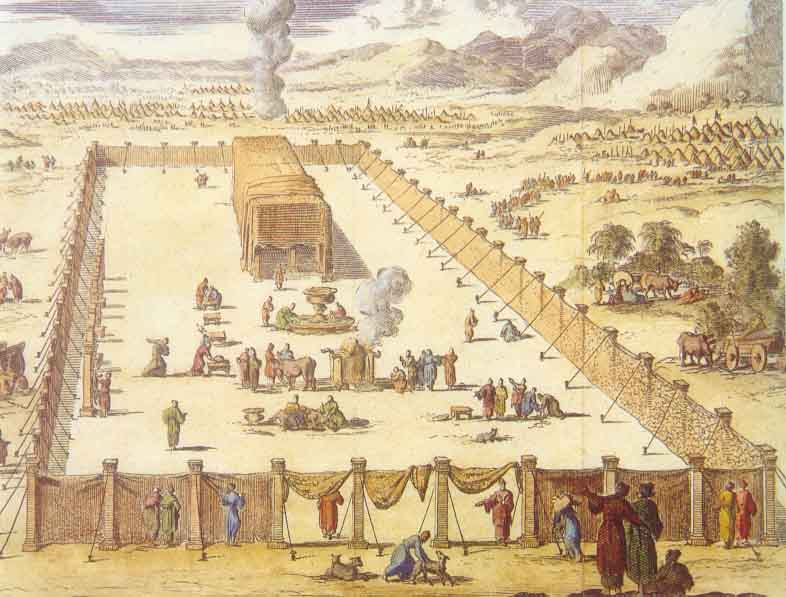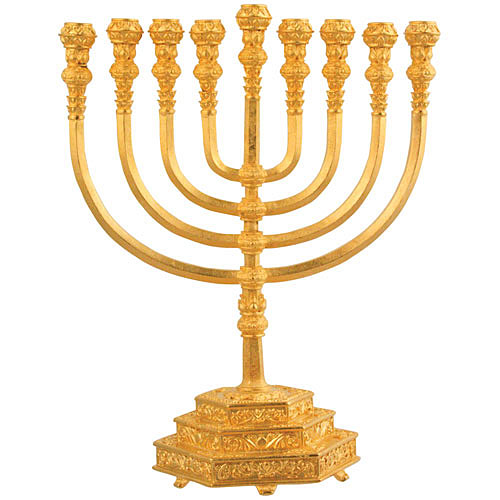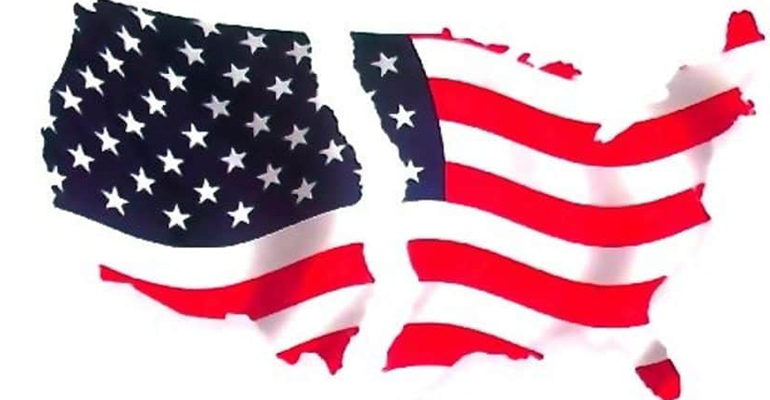Building the Tabernacle

In a nutshell
Parashat Vayakhel, Hebrew for “and he assembled”, tells of the making of the Tabernacle and its sacred vessels. It constitutes Exodus 35:1–38:20. Parashat Pekudei, Hebrew for “amounts of,” tells of the setting up of the Tabernacle. Parashat Vayakhel is usually combined with Parashat Pekudei to help achieve the needed number of weekly readings.
The Shabbat
Following the aftermath of the Golden Calf, Mosheh gather the Israelite, reminding them of the laws of the Shabbat: that they are to work for six days and rest on the seventh, and that they are to refrain from labor such as the kindling of fire. The rabbis will later expand on this, with 39 forms of labor, 39 Melachot asurot, which are prohibited on the Shabbat, but the Torah only explicitly describes one of them here. Where did the rabbis come up with this? How did they derive these other 38 categories? The answer is: they looked to the story of the building of the Mishkan (Tabernacle).
All Jews are needed
The people donated much more than the required materials, bringing gold, silver and copper; blue, purple and red-dyed wool; goat hair, spun linen, animal skins, wood, olive oil, herbs and precious stones. Mosheh asks them to stop giving. Both men and women participated in the construction and preparation of materials of the Mishkan, yet two individuals were singled out: Betzalel from the Tribe of Yehudah and Ohliav, from the tribe of Dan.
Yehudah and Dan Tribes
The Tribe of Yehudah, was considered the leader of all the tribes. Spiritually they were on a high level. All kings from the dynasty of David were descended of Yehudah, during the 40 years of wandering in the desert, the tribe of Yehudah always led the way. On the other hand, the Tribe of Dan, was the very last tribe to travel in the desert, and was considered the lowest spiritual level of all the tribes. By choosing Betzalel from the Tribe of Yehudah and Ohliav, from the tribe of Dan, the Torah teaches us that all Jews, regardless of their level of knowledge or observance, are equal. (Based on Likutei Sichot, vol. 1 p.201)
The building of the Mishkan
Throughout the prior three parshot: Terumah, Tetzaveh, and Ki Tissa, we read about G-d’s detailed instructions to Mosheh about how to build the Mishkan. A team of wise-hearted artisans make the Mishkan and its furnishings. Betzalel, Ohliav and their assistants make the eight priestly garments-the ephod, breastplate, cloak, crown, turban, tunic, sash and breeches-according to the specifications communicated to Moses in the Parshah of Tetzaveh.
The Mishkan is completed and all its components are brought to Mosheh, who anoints it with the holy anointing oil, and initiates Ahron and his four sons into the priesthood. A cloud appears over the Mishkan, signifying the divine presence that has come to dwell within it.
“These are some of the things that were made to go into the tabernacle. They are all very beautiful. The table is made of gold. It has twelve loaves of bread on it called shew-bread. There is a golden box too ; it is called the ark. It has two angels on its lid. The angels are made out of pure gold. And there is a golden candlestick, to burn and give light, inside of the tabernacle.”
Illustrators of the 1897 Bible Pictures and What They Teach Us by Charles Foster
“And it came to pass in the first month in the second year, on the first day of the month, that the tabernacle was reared up. And Moses reared up the tabernacle, and fastened his sockets, and set up the boards thereof, and put in the bars thereof, and reared up his pillars. And he spread abroad the tent over the tabernacle, and put the covering of the tent above upon it; as the Lord commanded Moses.” –
Exodus 40:17-19
The Erection of the Tabernacle and the Sacred Vessels (illustration from the 1728 Figures de la Bible)
39 forbidden labor on Shabbat
There were roughly 39 forms of labor which were involved in the construction of the Mishkan and the rabbis understood that whatever was done to make the Mishkan, that is precisely what we must NOT do on Shabbat. This is why the rabbis came up with The 39 forms of forbidden labor, the 39 Melachot asurot, which are prohibited on the Shabbat, even though the Torah only explicitly describes one of them.




Comments